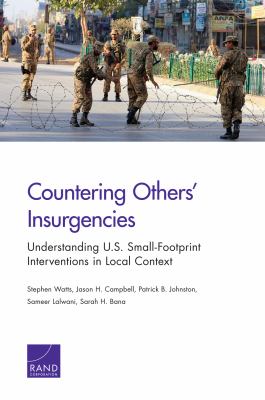
Book
|
Countering others' insurgencies : understanding U.S. small-footprint interventions in local context
-- Understanding U.S. small-footprint interventions in local context
Copies
1 Total copies, 1 Copies are in,
0 Copies are out.
Title
Countering others' insurgencies : understanding U.S. small-footprint interventions in local context -- Understanding U.S. small-footprint interventions in local context
Subjects
Counterinsurgency--Government policy--United States.
United States--Military relations.
Counterinsurgency--Philippines.
United States--Military relations--Philippines.
Philippines--Military relations--United States.
Counterinsurgency--Pakistan.
United States--Military relations--Pakistan.
Pakistan--Military relations--United States.
United States--Military relations.
Counterinsurgency--Philippines.
United States--Military relations--Philippines.
Philippines--Military relations--United States.
Counterinsurgency--Pakistan.
United States--Military relations--Pakistan.
Pakistan--Military relations--United States.
Language
English
Published
Santa Monica, CA : RAND, [2014]
Publication Desc
xxiv, 226 pages : illustrations ;
ISBN
9780833084040 (pbk. : alk. paper)
LCCN
2014005201
Series
Dimensions
23 cm








